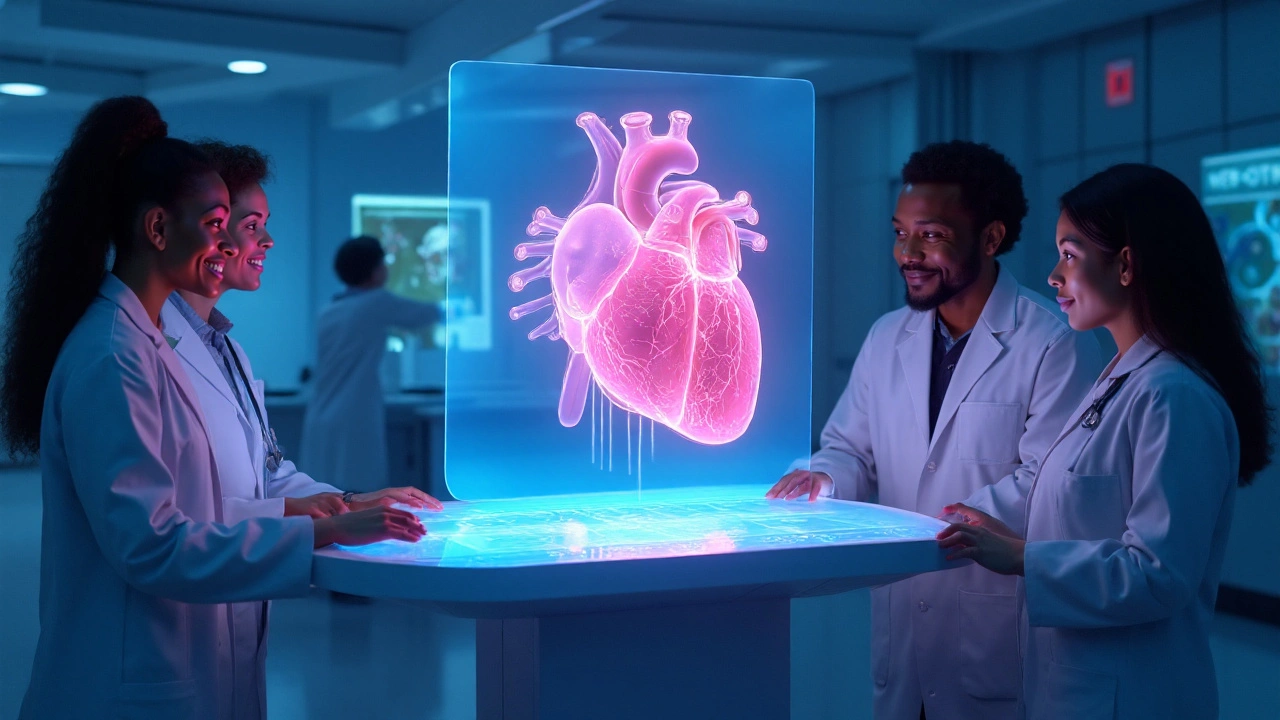If you’ve been told you need a cardiac MRI, you might wonder what’s different from a regular MRI. In short, a cardiac MRI uses magnetic fields and radio waves to create detailed pictures of your heart muscle, valves, and blood flow. It helps doctors see problems that other tests can miss, like scar tissue after a heart attack or subtle inflammation. The scan is painless, takes about 30‑45 minutes, and doesn’t involve X‑rays, so it’s safe for most people.
The machine looks like a big tube you slide into. Inside, a strong magnet lines up atoms in your body. When the scanner sends a quick pulse of radio waves, those atoms wobble and release signals that the computer turns into images. For a cardiac MRI, the tech will ask you to hold your breath at certain times so the pictures stay clear. Sometimes a contrast dye is injected through a vein to highlight blood vessels and heart tissue. The dye is safe for most folks but let the staff know if you have kidney issues.
Preparation is easy. Wear a loose shirt and remove metal objects—no jewelry, watches, or phone. If you have a pacemaker, cochlear implant, or other metal device, tell the doctor; some devices aren’t compatible with MRI. You’ll be asked about allergies, especially to the contrast dye, and about any medications you take. Eating a light meal is usually fine, but follow any specific instructions you get. When you arrive, a technologist will change you into a gown and explain the breathing cues.
During the scan, you’ll lie on a movable table that slides into the scanner. You’ll hear tapping and humming noises; earplugs or headphones are provided to keep things comfortable. Try to stay still and follow the breathing instructions—this helps get crisp images. If you feel claustrophobic, let the staff know; they can offer a blanket or a short break.
After the scan, the images are sent to a radiologist who writes a report for your cardiologist. The report will explain if the heart muscle looks healthy, if there’s any scar tissue, or if blood flow is abnormal. Your doctor will discuss the findings with you and decide if any follow‑up steps are needed, like medication changes or another test.
Overall, a cardiac MRI is a powerful tool that gives a clear view inside your heart without surgery. Knowing what to expect can reduce anxiety and help the scan go smoothly. If you have any worries—whether it’s about the contrast dye, the noise, or the length of the exam—just ask the tech or your doctor. They’re there to make the experience as comfortable as possible.

Explore the latest breakthroughs in hypertrophic subaortic stenosis, from genetic discoveries and imaging upgrades to novel drugs and future gene‑therapy prospects.
read more